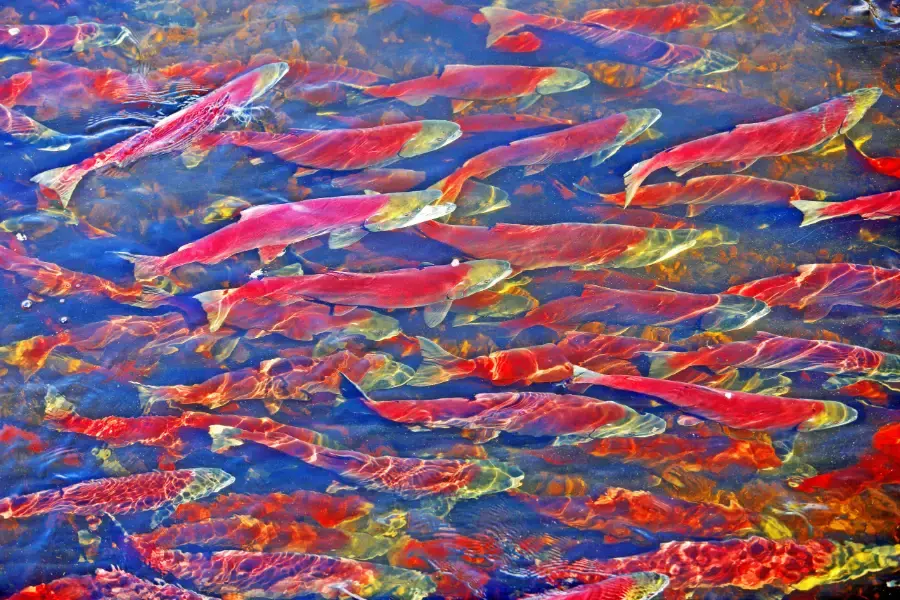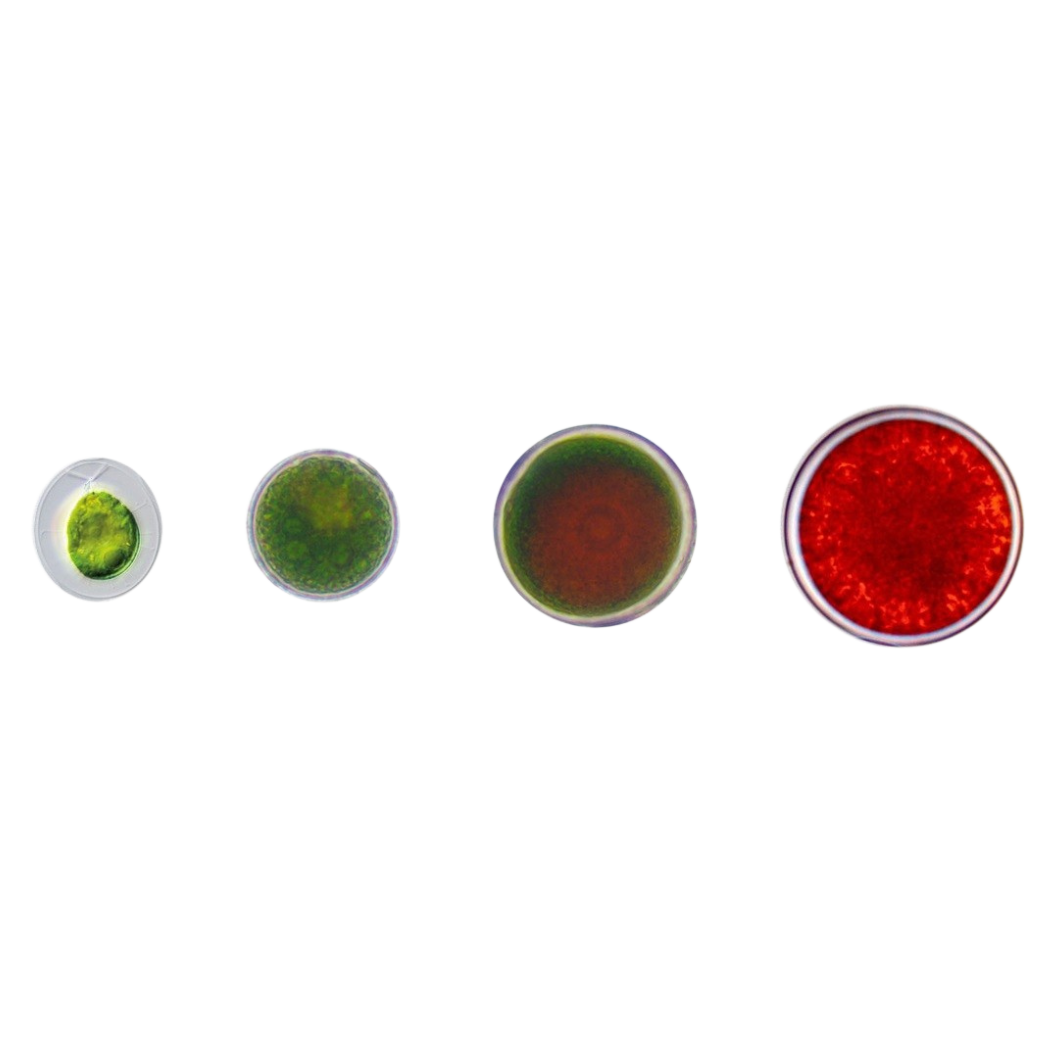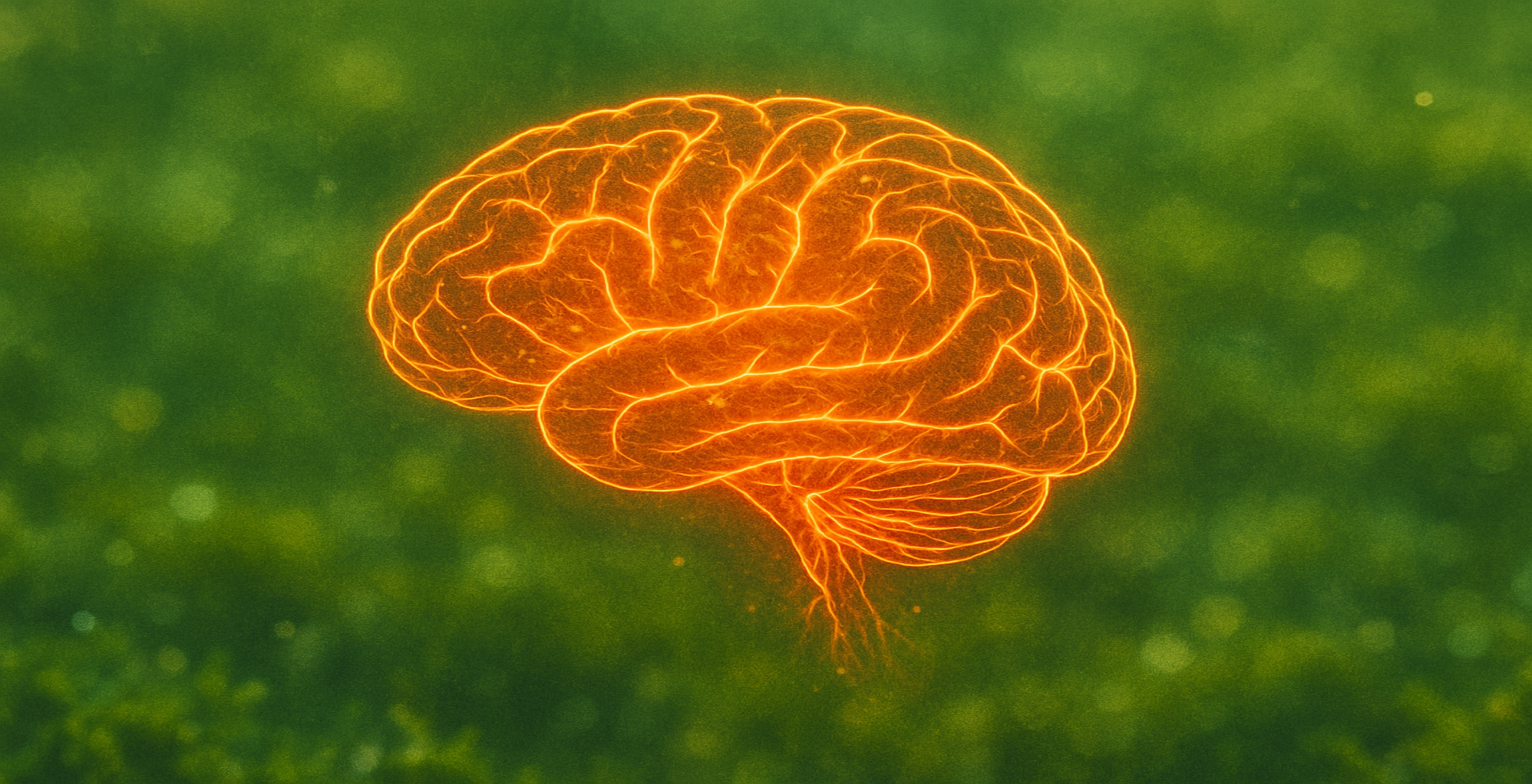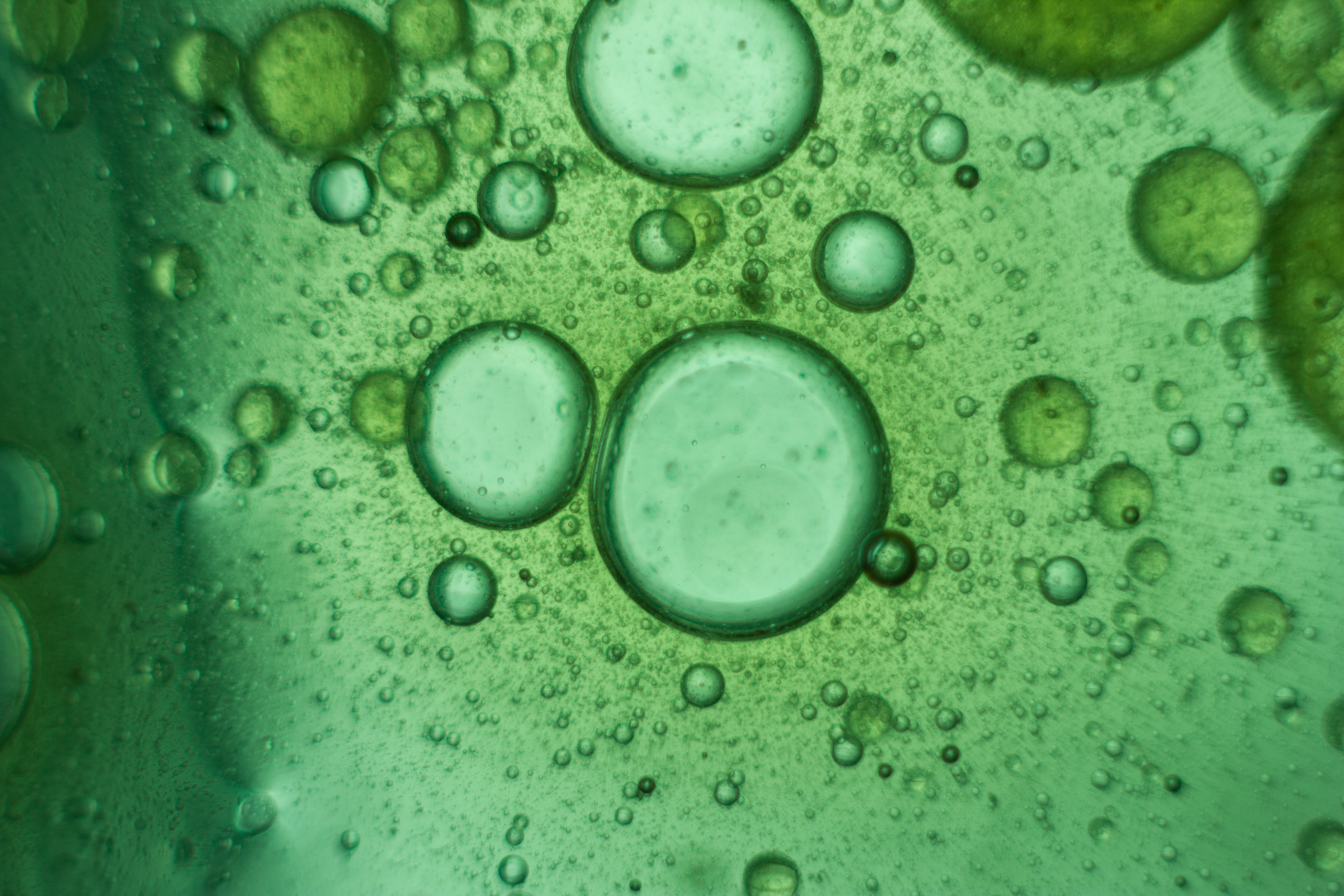
Dr. Gene Bruno
Dr Gene Bruno is Professor Emeritus of Nutraceutical Science at Huntington University of Health Sciences and currently serves as Chief Scientific Officer of Nutraland USA, Inc. With an illustrious career spanning over 45 years in the dietary supplement industry, Gene is a renowned expert and award-winning formulator.
Astaxanthin: An Extraordinary Antioxidant
Astaxanthin, a pinkish-reddish carotenoid derived from the microalgae Haematococcus pluvialis and found in foods such as salmon, trout, shrimp and lobster,¹ ² has generated a great deal of excitement due to the ongoing plethora of published research validating a significant number of health benefits.
Structurally similar to beta-carotene³, astaxanthin has tremendous antioxidant activity. In fact, research⁴ has demonstrated that the antioxidant activity of astaxanthin is approximately 10 times stronger than other carotenoids tested (e.g., zeaxanthin, lutein, tunaxanthin, canthaxanthin, beta-carotene) and 100 times greater than those of vitamin E (alpha-tocopherol). This resulted in one researcher stating that “astaxanthin has the properties of a ‘super vitamin E’”⁵. Other research has also demonstrated superior antioxidant activity of astaxanthin over carotenoids and vitamin E⁶.
It is astaxanthin’s marked antioxidant activity that seems to be the primary source of its health-promoting properties. These properties include improvements in cardiovascular health, diabetic nephropathy, muscle endurance, eye fatigue, H. pylori/dyspepsia, skin, fat metabolism, inflammation, stress and immune function.
Cardiovascular Health
In Japan, the International Research Center for Traditional Medicine investigated the effects of astaxanthin in hypertensive (i.e., high blood pressure) rats. They found that, after 14 days, astaxanthin provided significant reduction in the arterial blood pressure. After five weeks, astaxanthin significantly reduced blood pressure in stroke-prone rats. The researchers suggested that astaxanthin can exert beneficial effects in protection against hypertension and stroke and in improving memory in vascular dementia. The mechanism of action appears to be a relaxation of blood vessels mediated by nitric oxide⁷⁸⁹. Likewise, in a human study, 6 mg astaxanthin daily for 10 days resulted in an increase in circulation¹⁰.
In a placebo-controlled, 12-week human study¹¹, subjects with high fasting triglyceride levels (120-200mg/dl) receiving various daily doses of astaxanthin. The results were that 12 and 18 mg/day doses significantly reduced triglyceride, and 6 and 12 mg doses significantly increased HDL-cholesterol. Serum adiponectin (a hormone associated with less body fat) was increased by 12 and 18 mg/day astaxanthin. In addition, a double-blind, placebo-controlled human study¹² found that 4 mg/day astaxanthin reduced lipid peroxidation, which may also promote healthy cardiovascular function.
Diabetic Nephropathy
Diabetic nephropathy is kidney disease or damage that occurs in diabetes. In a 12-week study¹³, type 2 diabetic mice received astaxanthin, while a control group of diabetic mice receive none. The results were that the astaxanthin-treated group showed a lower level of blood glucose compared with the non-treated group. Also, the antioxidative activity of astaxanthin reduced the oxidative stress on the kidneys and prevented kidney cell damage¹⁴. The researchers concluded that astaxanthin might be a novel approach for the prevention of diabetes nephropathy. Additional research suggests that another mechanism of action may be that astaxanthin helps modulate genes involved in protecting kidney cells¹⁵.
Muscle Endurance
Research on mice has demonstrated that astaxanthin reduces muscle and heart damage caused by exercise¹⁶. Other research on mice demonstrated that astaxanthin improved exercise endurance by increasing the utilization of fatty acids as an energy source¹⁷.
In a double-blind, placebo-controlled study¹⁸, 40 male students received astaxanthin or placebo daily in conjunction with a meal. Standardized exercise tests were carried out before starting the dietary supplementation, and after three and six months of dietary supplementation with the capsules. The results were a statistically significant (P=0.047) increase in strength/endurance of the astaxanthin group over the placebo group. For example, the astaxanthin group was able to do 61.74 knee-bends, while the placebo group did 21.78 knee bends.
In another human study¹⁹, 16 adult males running 1200 meters received 6 mg/day astaxanthin or placebo for four weeks. The results were that serum lactic acid concentration at 2 minutes after running in the astaxanthin group was significantly lower than that of the control group.
Based on these findings, researchers suggested that supplementation of astaxanthin is effective for improvement of muscle fatigue, and may lead to sports performance benefits. The effects of 12 mg/day astaxanthin for 6 weeks with aerobic exercise (walking) were examined using healthy adult women in a randomized double-blind placebo-controlled study. The results were that astaxanthin supplementation contributed to reduction of body fat and suppressed the increase in blood lactic acid level after exercise.
Eye Fatigue
Many people are experiencing eyestrain or eye fatigue as a result of frequent and ongoing use of computers at home and in the office²¹. There are a number of studies showing that astaxanthin can make a significant difference.
In one study²², people with eyestrain given 6 mg/day of astaxanthin for two weeks were able to reduce and prevent further eyestrain caused by accommodative dysfunction (i.e., difficulty focusing at a book, computer screen, etc.). Another study²³ indicated that accommodation amplitude (i.e., the ability of the eye to focus) was improved in computer users after 5 mg daily astaxanthin supplementation for 4 weeks.
Additional research found that computer users with eye fatigue experienced significant relief with 6 mg astaxanthin daily for 4 weeks²⁴.
The effect of 6 mg/day astaxanthin or placebo on asthenopia (i.e., weakness or easy fatigue of the eye with eye pain, headache, or dim vision) was also examined in a double-blind study²⁵ for four weeks. The results were that astaxanthin improved subjective symptoms of asthenopia, as well as the ability to focus.
Another interesting study²⁶ evaluated the effect of 0 mg, 2 mg, 4 mg, or 12 mg astaxanthin/day on visual function in 49 healthy volunteers over 40 years of age. After 28 days, visual acuity significantly improved in those receiving 4 mg or 12 mg. The time it took for the eye to focus also improved.
Likewise, in a 4-week, placebo-controlled study²⁷ using 6 mg/astaxanthin or placebo, visual acuity was examined in 18 healthy adult male volunteers. The results were that visual acuity significantly improved in the astaxanthin group compared to the control group.
H. pylori/Dyspepsia
Helicobacter pylori are bacteria found in the stomach and implicated in many patients with chronic gastritis, gastric ulcers, duodenal ulcers, and stomach cancer²⁸.
In research on H. pylori-infected mice, treatment with astaxanthin reduced gastric inflammation and bacterial load²⁹. Another study³⁰ on H. pylori-infected mice found that treatment with astaxanthin and vitamin C showed significantly lower colonization of H. pylori and lower inflammation scores than those of untreated.
In a 4-week, prospective, randomized, double-blind, and placebo-controlled study³¹, patients with functional dyspepsia were divided into three groups of 44 individuals each and treated with placebo, 16 mg, or 40 mg astaxanthin. At the end of therapy, there was a significant reduction of reflux syndrome in the higher (40 mg) dose compared to the other treatment groups (16 mg and placebo, p=0.04).
Skin
The cosmetic effects on human skin by 4 mg per day astaxanthin supplementation were demonstrated in a single-blind placebo-controlled study³² using forty-nine US healthy middle-aged women.
Based upon dermatologist’s assessment and instrumental assessment at week 6 compared to base-line initial values, the results were more than a 50% reduction in fine lines and wrinkles, about a 50% improvement in the moisture content of skin, and more than a 50% improvement in skin elasticity. In addition, self-assessment of patients indicated a reduction of skin roughness by more than 40%.
Fat Metabolism
In a 4-week study³³ the effects of astaxanthin on muscle fat metabolism in exercising mice treated with and without astaxanthin were examined. The results were that astaxanthin increased fat utilization during exercise compared with mice not receiving astaxanthin. Also, astaxanthin treatment accelerated the decrease of body fat accumulation with exercise training. The results suggest that astaxanthin promoted fat metabolism rather than glucose utilization during exercise, which led to improvement of endurance and efficient reduction of adipose tissue with training.
A similar study³⁴ on mice also showed that astaxanthin treatment significantly decreased fat accumulation and exercise endurance by increased utilization of fatty acids as an energy source.
In a 6-week, randomized, double-blind, placebo-controlled study³⁵, 32 healthy women were divided into two groups and received 12 mg/day astaxanthin or the placebo. The subjects were instructed to take a walking exercise 3 times a week according to their own physical strength. The results were that the average body fat percentage was significantly decreased 3.8% in the astaxanthin supplemented group compared with no significant difference between before and after supplementation in the placebo.
Inflammation
Animal research³⁶ has demonstrated that astaxanthin inhibits the production of inflammatory mediators (e.g., NF-kappaB), probably due to its antioxidant activity. In research³⁷ on rats, the effect of astaxanthin was on endotoxin-induced uveitis (i.e., swelling and irritation of the middle layer of the eye). The results were that astaxanthin suppressed the development of uveitis. Other research has shown similar results³⁸.
Stress
An 8-week, open-label non-controlled study³⁹ was conducted to evaluate the mental and physical effects of 12 mg/day astaxanthin in 35 healthy postmenopausal women, 21 with high oxidative stress burden. Subjects were assessed by means of an Anti-Aging Quality of Life Common Questionnaire, as well as laboratory tests before and four and eight weeks after the start of the study.
The results were that after eight weeks, significant improvement was observed in physical symptoms listed in the common questionnaire, including "tired eyes," "stiff shoulders," "constipation," "gray hair" and "cold skin," and in three mental symptoms, including "daily life is not enjoyable," "difficulty in falling asleep" and "a sense of tension." In addition, systolic and diastolic blood pressure significantly decreased. Results also show that astaxanthin may enhance antioxidant capacity.
Immune Function
An 8-week, randomized, double-blind, placebo-controlled study⁴⁰ assessed the effects of astaxanthin (0, 2, or 8 mg/day) in modulating immune response, oxidative status, and inflammation in young healthy adult female human subjects. The results were that astaxanthin decreased a DNA damage biomarker after four weeks, decreased C-reactive protein (an inflammation marker) after eight weeks. In subjects given 2 mg astaxanthin, there were increased markers of immune function, including an increase in natural killer cell cytotoxic activity, total T and B cell subpopulations, and leukocytes. Plasma IFN-gamma and IL-6 increased on in subjects given 8 mg astaxanthin.
Conclusions
Extensive human and animal research has been conducted on the health-promoting benefits of astaxanthin. Since relatively small amounts of this nutraceutical are needed for efficacious effects, supplementation with astaxanthin may be a practical addition to individual programs for health and wellness.
References:
1 Goodwin TW. Metabolism, nutrition, and function of carotenoids. Annu Rev Nutr 1986;6:273-97.
2 Kobayashi M, Kakizono T, Nishio N, et al. Antioxidant role of astaxanthin in the green alga Haematococcus pluvialis. Appl Microbiol Biotechnol 1997;48:351-6.
3 Yuan J-P, Peng J, Yin K, Wang J-H. Potential health-promoting effects of astaxanthin: A high-value carotenoid mostly from microalgae. Mol. Nutr. Food Res. 2011;55:150–165.
4 Miki W. Biological functions and activities of animal Carotenoids. Pure &Appl Chem. 1991;63(1):141-146.
5 Miki W. Biological functions and activities of animal Carotenoids. Pure &Appl Chem. 1991;63(1):141-146.
6 Naguib YM. Antioxidant activities of astaxanthin and related carotenoids. J Agric Food Chem. 2000;48:1150-4.
7 Hussein G, Nakamura M, Zhao Q, Iguchi T, Goto H, Sankawa U, Watanabe H. Antihypertensive and neuroprotective effects of astaxanthin in experimental animals. Biol Pharm Bull. 2005 Jan;28(1):47-52.
8 Hussein G, Goto H, Oda S, Iguchi T, Sankawa U, Matsumoto K, Watanabe H. Antihypertensive potential and mechanism of action of astaxanthin: II. Vascular reactivity and hemorheology in spontaneously hypertensive rats. Biol Pharm Bull. 2005 Jun;28(6):967-71.
9 Hussein G, Goto H, Oda S, Sankawa U, Matsumoto K, Watanabe H. Antihypertensive potential and mechanism of action of astaxanthin: III. Antioxidant and histopathological effects in spontaneously hypertensive rats. Biol Pharm Bull. 2006 Apr;29(4):684-8.
10 Miyawaki H, Takahashi J, Tsukahara H, Takehara I. Effects of astaxanthin on human blood rheology. J Clin Biochem Nutr. 2008 Sep;43(2):69-74.
11 Yoshida H, Yanai H, Ito K, Tomono Y, Koikeda T, Tsukahara H, Tada N. Administration of natural astaxanthin increases serum HDL-cholesterol and adiponectin in subjects with mild hyperlipidemia. Atherosclerosis. 2010 Apr;209(2):520-3.
12 Karppi J, Rissanen TH, Nyyssönen K, Kaikkonen J, Olsson AG, Voutilainen S, Salonen JT. Effects of astaxanthin supplementation on lipid peroxidation. Int J Vitam Nutr Res. 2007 Jan;77(1):3-11.
13Naito Y, Uchiyama K, Aoi W, Hasegawa G, Nakamura N, Yoshida N, Maoka T, Takahashi J, Yoshikawa T. Prevention of diabetic nephropathy by treatment with astaxanthin in diabetic db/db mice. Biofactors. 2004;20(1):49-59.
14 Kim YJ, Kim YA, Yokozawa T.Protection against Oxidative Stress, Inflammation, and Apoptosis of High-Glucose-Exposed Proximal Tubular Epithelial Cells by Astaxanthin. J. Agric. Food Chem. 2009;57(19):8793–8797.
15 Naito Y, Uchiyama K, Mizushima K, et al. Microarray profiling of gene expression patterns in glomerular cells of astaxanthin-treated diabetic mice: a nutrigenomic approach. Int J Mol Med. 2006 Oct;18(4):685-95.
16 Aoi W, Naito Y, Sakuma K, et al. Astaxanthin limits exercise-induced skeletal and cardiac muscle damage in mice. Antioxid Redox Signal. 2003 Feb;5(1):139-44.
17 Ikeuchi M, Koyama T, Takahashi J, Yazawa K. Effects of astaxanthin supplementation on exercise-induced fatigue in mice. Biol Pharm Bull. 2006 Oct;29(10):2106-10.
18 Malmsten C and Lignell A. Dietary Supplementation with astaxanthin-rich algal meal improves strength endurance –A Double Blind Placebo Controlled Study on Male Students. Carotenoid Science. 2008; 13:20-22.
19 Keisuke S, Hiroshi Y, Kazuhiro A, Natsue K, Akito A, Kesatiki K, Masahiro Y. Sports Performance Benefits from Taking Natural Astaxanthin Characterized by Visual Acuity and Muscle Fatigue Improvement in Humans. Journal of Clinical Therapeutics & Medicines. 2002;18(9):1085-1100.
20 Fukamauchi M. The Supplementation Effects of Astaxanthin with Aerobic Exercise in Healthy Adult Women. Leon Fitness Club, Suzuka Kaisei Hospital, 112-1 Koucho, Suzuka, Mie 513-0836, Japan.
21 Kowalska M, Zejda JE, Bugajska J, et al. [Eye symptoms in office employees working at computer stations] Med Pr. 2011;62(1):1-8.
22 Tsuneto I, Akihiko T. Effects of Astaxanthin on Eyestrain Induced by Accommodative Dysfunction. Journal of the Eye. 2006;23(6): 829-834.
23 Nagaki Y, Hayasaka S, Yamada T, et al. Effects of astaxanthin on accommodation, critical flicker fusion, and pattern visual evoked potential in visual display terminal workers. Journal of Traditional Medicines. 2002;19(5):170-173.
24 Yasunori N, Miharu M, Hiroki T, Shigeaki O. The supplementation effect of Astaxanthin on Accommodation and Asthenopia. Journal of Clinical Therapeutics & Medicines. 2006; 22(1):41-54.
25 Kenji S, Kazuhiro O, Takuya N, et al. Effect of Astaxanthin on Accommodation and Asthenopia-Efficacy-Identification Study in Healthy Volunteers. Journal of Clinical Therapeutics & Medicines. 2005;21(6):637-650.
26 Akira N, Ryoko I, Yashhiro O, et al. Changes in visual function following peroral astaxanthin. Japanese Journal of Clinical Ophthalmology. 2004;58(6):1051-1054.
27 Keisuke S, Hiroshi Y, Kazuhiro A, et al. Sports Performance Benefits from Taking Natural Astaxanthin Characterized by Visual Acuity and Muscle Fatigue Improvement in Humans. Journal of Clinical Therapeutics & Medicines. 2002;18(9):1085-1100.
28 Blaser MJ. Who are we? Indigenous microbes and the ecology of human diseases. EMBO reports 2006;7(10):956–60.
29 Bennedsen M, Wang X, Willén R, Wadström T, Andersen LP. Treatment of H. pylori infected mice with antioxidant astaxanthin reduces gastric inflammation, bacterial load and modulates cytokine release by splenocytes. Immunol Lett. 1999 Dec 1;70(3):185-9.
30 Wang X, Willén R, Wadström T. Astaxanthin-rich algal meal and vitamin C inhibit Helicobacter pylori infection in BALB/cA mice. Antimicrob Agents Chemother. 2000 Sep;44(9):2452-7.
31 Kupcinskas L, Lafolie P, Lignell A, et al. Efficacy of the natural antioxidant astaxanthin in the treatment of functional dyspepsia in patients with or without Helicobacter pylori infection: A prospective, randomized, double blind, and placebo-controlled study. Phytomedicine. 2008 Jun;15(6-7):391-9.
32 Yamashita E. The Effects of a Dietary Supplement Containing Astaxanthin on Skin Condition. Carotenoid Science. 2006;10:91-95.
33 Aoi W, Naito Y, Takanami Y, et al. Astaxanthin improves muscle lipid metabolism in exercise via inhibitory effect of oxidative CPT I modification. Biochem Biophys Res Commun. 2008 Feb 22;366(4):892-7.
34 Ikeuchi M, Koyama T, Takahashi J, Yazawa K. Effects of astaxanthin supplementation on exercise-induced fatigue in mice. Biol Pharm Bull. 2006 Oct;29(10):2106-10.
35 Yamashita E. Chapter 39: A New Approach to Body Fat Reduction by Astaxanthin During Exercise. Anti-Aging Therapeutics. 2010;12:345-359.
36 Lee SJ, Bai SK, Lee KS, et al. Astaxanthin inhibits nitric oxide production and inflammatory gene expression by suppressing I(kappa)B kinase-dependent NF-kappaB activation. Mol Cells. 2003 Aug 31;16(1):97-105.
37 Ohgami K, Shiratori K, Kotake S, Nishida T, Mizuki N, Yazawa K, Ohno S. Effects of astaxanthin on lipopolysaccharide-induced inflammation in vitro and in vivo. Invest Ophthalmol Vis Sci. 2003 Jun;44(6):2694-701.
38 Suzuki Y, Ohgami K, Shiratori K, et al. Suppressive effects of astaxanthin against rat endotoxin-induced uveitis by inhibiting the NF-kappaB signaling pathway. Exp Eye Res. 2006 Feb;82(2):275-81.
40. Iwabayashi M, Fujioka N, Nomoto K, et al. Efficacy and safety of eight-week treatment with astaxanthin in individuals screened for increased oxidative stress burden. Anti-Aging Medicine. 2009;6(4):15-21.
40. Park JS, Chyun JH, Kim YK, Line LL, Chew BP. Astaxanthin decreased oxidative stress and inflammation and enhanced immune response in humans. Nutr Metab (Lond). 2010 Mar 5;7:18.










